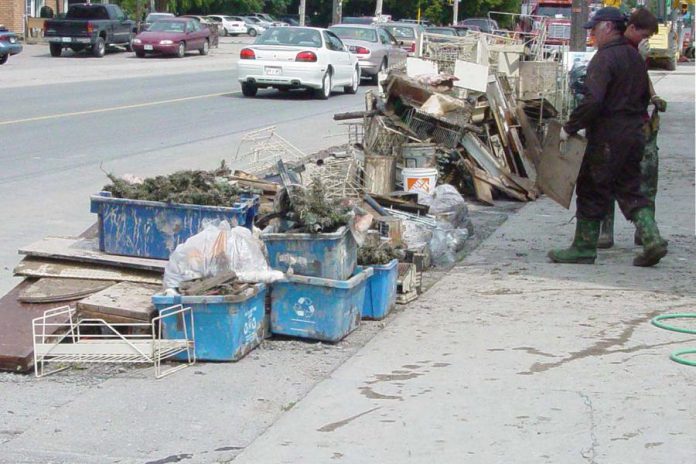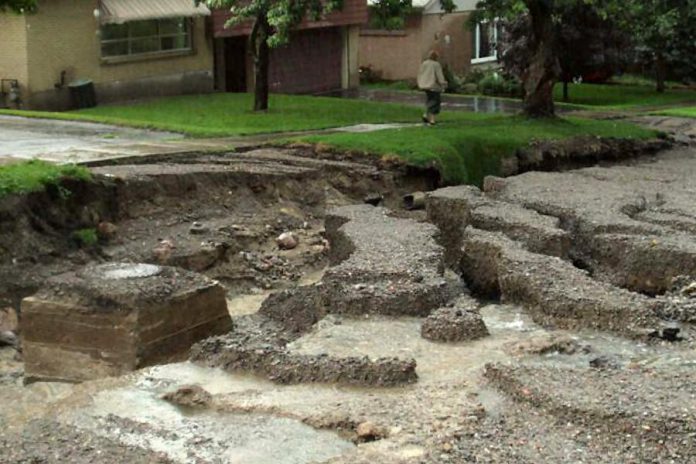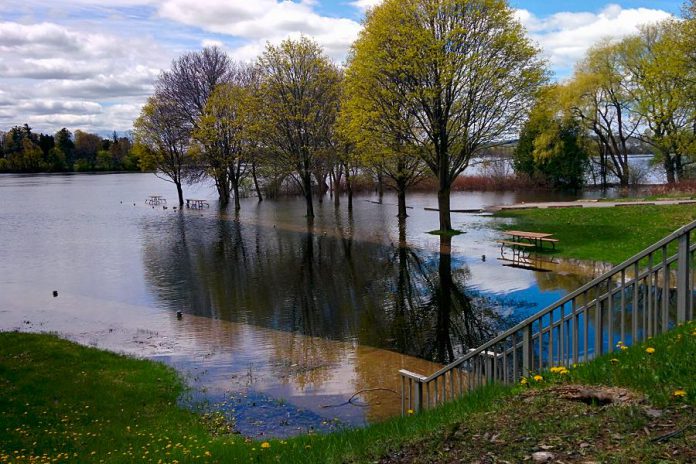
Over the last couple of weeks, the sun has given us small glimpses of spring ahead. As the accumulated snow begins to melt, we know spring showers are usually to follow.
When we think of flooding, we often associate it with overland flooding, which is when water in a river or stream exceeds the capacity of its banks, crosses land, and ends up in nearby basements. If you live along a stream, river, or lake, you are likely quite familiar with how to minimize the risks of overland flooding during a spring thaw.
My grandfather lived on Western Avenue in the south end of the City of Peterborough. He worked hard to prepare for many things: he insisted that every item be secured in place on our camping trips, he installed deer prevention whistles to his vehicle, he took great care to prevent infestations in his backyard gardens, but on Western Avenue, he never worried about preparing for flooding.
In 2004, my grandfather — like many other Peterborough residents — learned first-hand about the impacts of urban flooding on areas that seemed far from any stream, river, or lake (and thus, that were previously less prone to overland flooding).

Urban flooding occurs when it rains more than our current systems can handle, leaving rain nowhere else to go but into our homes, businesses, and other built forms. Current climate change predictions warn that more unpredictable weather patterns are likely to worsen, including experiencing large volumes of rain in shorter periods of time.
Unfortunately, these kinds of rain events create the optimal conditions for urban flooding.
If you are like my grandfather and are not thinking about flooding, there is still time to prepare. There are many things you can do to prepare for, and minimize the impacts associated with, urban flooding. Many entities, including GreenUP, are working with neighbourhoods, residents, and professionals to shift how we plan for and manage rain.

Fleming College, in collaboration with Seneca College and the Intact Centre on Climate Adaptation (Intact Centre), has launched the ground-breaking Home Flood Risk Assessment Training (HFRAT) Course. It provides practical training for industry specialists who can then help homeowners address the growing threat of basement flooding.
Some of the HFRAT recommendations include ways to protect your home from the inside by installing and cleaning your backwater valve, regularly testing your sump pump, installing and testing a flood alarm, and maintaining your plumbing. Outside, you can keep your eavestroughs clean, your storm drains clear, and ensure your grading is moving water at least two metres away from your foundation.
GreenUP continues to share practical information, host workshops, and promote the installation of rain barrels and rain gardens. Another environmental organization, Green Communities Canada, recommends keeping three things in mind when thinking about water on your property: slow it down, soak it up, and keep it clean.

A great place to start is to take a walk around the outside of your home, especially while it’s raining, to investigate how rain is moving or pooling on your property. Think about extending your downspouts so they go further away from your home, or better yet, install a rain barrel to help slow the water down.
Want to do even more? Soak that rain up by redirecting it into a rain garden. A rain garden is a shallow bowl-shaped garden planted with native species that allow rain to naturally soak deep into the ground. A rain garden stays dry when it is not raining, and it can mitigate flooding on your property, in your neighbourhood, and across the city. With the right plants, it can also support pollinators.
If you are doing work to mitigate your risk to urban flooding, think about checking in with the City of Peterborough about the Flood Reduction Subsidy Program.
VIDEO: Rethink the Rain – City of Peterborough
“The Flood Reduction Subsidy Program provides financial assistance to landowners for fixing identified sources of rainwater inflow or groundwater infiltration into the cty’s sanitary sewer system on their property,” explains Jeremy Campbell, wastewater collection coordinator for the City of Peterborough.
“The city will provide financial assistance toward property improvements such as the installation of a backwater valve, foundation drain disconnection from a sanitary sewer with a sump pit and pump installation, repair of broken or missing clean out caps, downspout and roof drain disconnection from the sanitary sewer, and more.”
Residents can reduce the potential of basement flooding, while improving our community’s environment when they participate in the Flood Reduction Subsidy Program by removing the rainwater inflow or groundwater infiltration sources.
When it comes to urban flooding, we all play a role, but with some keen spring awareness, preparation, and perhaps some gardening, we can mitigate risks, and we can also thrive.
There are many more ways you can prepare for and mitigate flooding. For more information about rain gardens visit www.greenup.on.ca/rain.
Full details of the City of Peterborough Flood Reduction Subsidy Program can be found online at www.peterborough.ca/floodreduction.
To find out more about Fleming College’s Home Flood Risk Assessment Training (HFRAT) course and to register, visit www.flemingcollege.ca/hfrat.
Green Communities Canada can help you learn more about RAIN from a number of community perspectives. Visit them at www.raincommunitysolutions.ca.


























